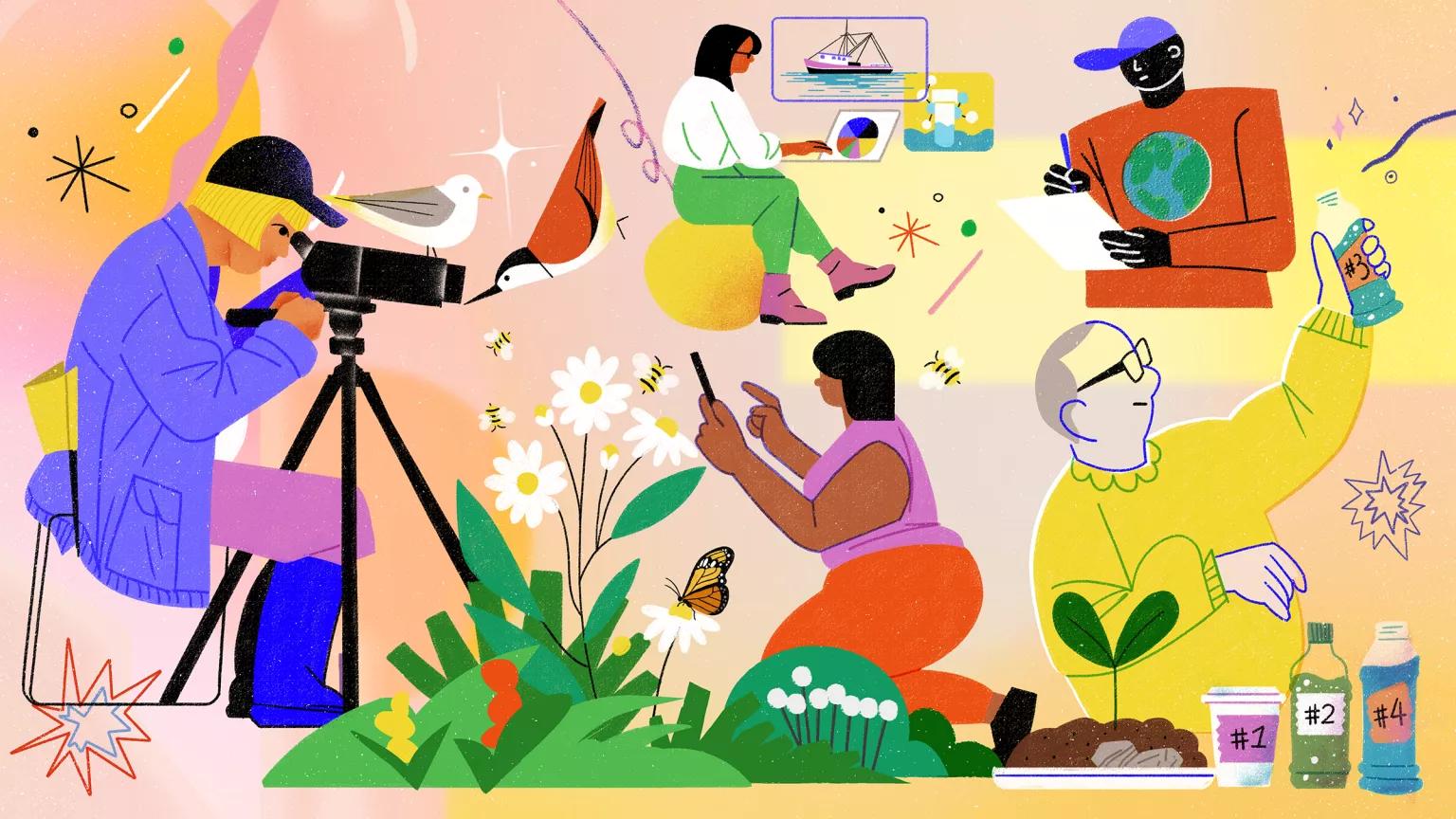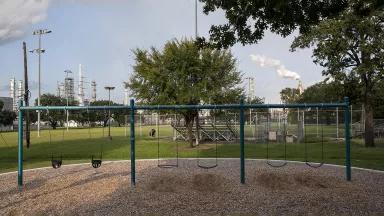How to Become a Community Scientist
Six steps to get you started in the world of participatory environmental research

Decue Wu for NRDC
Around the world, community scientists of all ages—armed with curiosity but little formal training—are helping researchers collect data on everything from the migratory patterns of birds to the impacts of climate change on coastlines. This field of participatory research, also known as citizen science, is growing fast—and for good reason. By snapping a photo or inputting observations into an app, you can help build more robust bodies of knowledge that can lead to scientific breakthroughs and help shape important public policies.
Whether your hobby is birding, snorkeling, hiking, or some other nature activity, it’s easy to find opportunities to collect related data and share it with researchers. Plus, there is no age restriction. You can even find projects that address the environmental issues happening in your own neighborhood. Here’s how to get started.
1. Determine which topics you’re most curious about.
“I'm a firm believer in following your interests and your curiosity,” says Emma Giles, a program coordinator at the popular community science project database SciStarter. “All citizen science projects, on whatever topic, exist because they need more people to help.” There’s also a wide spectrum of potential engagement. In some cases, individuals can contribute observations to a national database, while in others, a specific community can help to define and implement a research project that directly addresses local concerns. So think about what you already find interesting, or worrying, in your environment or the places you visit. If you need inspiration, here are some of the most popular categories and the kinds of data you might collect.
- Air quality: Measure air pollutants such as fine particulate matter, report on visual signs of pollution, and even share information about your own related symptoms.
- Astronomy: Observe the night sky to help scientists predict solar storms, measure light pollution, and even find comets.
- Birding: Learn to identify bird species in your area and report on their behaviors.
- Climate: Help scientists better understand and prepare for the impacts of climate change by reporting observations of shifts in everything from flooding to fall foliage.
- Health: Advance medicine and public health with projects like tick surveillance.
- Nature: Observe the wild world around you by, say, taking pictures of non-native trees or tracking pollinators.
- Ocean: Help scientists study the health of the ocean by monitoring marine debris, taking photos of coastal erosion, or even scuba diving to count fish underwater.
- Water quality: Assess the health of rivers, lakes, and streams by collecting water samples, measuring pollution levels, or observing the water’s turbidity.
2. Consider some basic training.
Community science requires no previous experience. But some introductory trainings—like SciStarter’s Foundations of Citizen Science or Cornell University’s Citizen Science Training—can help ground you in the best practices for data collection. “Whatever app you want to use, whatever project you want to be a part of, it helps to know the basics,” Giles says. Specific projects will also have clear instructions for volunteers.
3. Figure out if you will need any essential gear.
Most projects require little more than a smartphone and a keen sense of observation. But you may eventually want to invest in some low-cost equipment to expand the kind of data you can collect—like binoculars, a microscope, a low-cost air quality monitor, or a water testing kit. Check out SciStarter’s tool guide for specific brand recommendations. Some libraries also carry SciStarter kits, allowing the public to borrow equipment like air quality sensors or to receive resources specific to local projects and connect with neighboring volunteers.
4. Find your community science project.
A number of popular databases allow you to sort active projects by criteria like location, topic, duration, and appropriate age range. Here’s where to start looking.
- SciStarter: One of the most popular hubs for community science participation, SciStarter lists thousands of active projects globally. Users can sort by location, keyword, and even where you’d like to complete the task, like at home or while on a hike.
- National park projects: From Acadia to Olympic, national park visitors can observe and collect data that will go toward further understanding and protecting the country’s most awe-inspiring natural places.
- NASA projects: Help America’s space agency conduct important research on everything from asteroids to clouds on Mars, some of which can be completed right from your computer.
So far, NASA’s community science collaborators have helped make thousands of discoveries and are listed as coauthors in hundreds of scientific publications.
- Citizen Science with other federal agencies: Assist federal agencies in crowdsourced research that addresses real-world problems, like understanding how dams affect the health of the Colorado River ecosystem.
- Zooniverse: Volunteers can help analyze buckets of already collected samples. In addition to individual projects, Zooniverse users can also communicate with researchers on active discussion boards.
5. Or download a community science app.
You don’t always have to sign up for a specific research project to participate. Dozens of apps allow you to go out into the field (even if that’s only as far as your backyard) and report back about the natural world into centralized databases that advance a number of issues. Here are a few.
- eBird: This popular birding app allows avian enthusiasts to report sightings from any location in the world while also searching crowdsourced databases for birding hot spots and keeping track of their own life lists.
- iNaturalist: This naturalist app allows users to identify and document plant and animal species. The data contributed get shared to scientific repositories.
- iSeeChange: Cities, local organizations, and others can identify trends, improve models, and shape adaptation solutions with the aid of this crowdsourced climate and weather data app.
- Marine Debris Tracker: Help tackle the crisis of marine pollution by reporting debris sightings, which feed into a database that researchers use to better understand patterns and root causes.
- Monarch Watch: This butterfly tagging and tracking project helps monitor the health of hundreds of thousands of monarchs as they make their annual migration across North America.
6. Invite some friends. (The more, the merrier!)
Participatory research allows community members who know their home best to share knowledge, expertise, and perspectives, ultimately helping to solve problems and reshape the systems that affect so many lives. And its success hinges on contributions from a lot of us—the more data we all contribute, the richer a picture we can paint of how our environment is changing. “Community science is a way of doing locally engaged science around global issues in a deeply collaborative way,” says Rajul Pandya, vice president of community science at Thriving Earth Exchange, an organization that helps connect the public with scientists. “A paper is a wonderful thing, but it’s not a community impact. A policy change, a plan to adapt, more resources—those are the kinds of things we're looking to achieve with community science.”
This NRDC.org story is available for online republication by news media outlets or nonprofits under these conditions: The writer(s) must be credited with a byline; you must note prominently that the story was originally published by NRDC.org and link to the original; the story cannot be edited (beyond simple things such as grammar); you can’t resell the story in any form or grant republishing rights to other outlets; you can’t republish our material wholesale or automatically—you need to select stories individually; you can’t republish the photos or graphics on our site without specific permission; you should drop us a note to let us know when you’ve used one of our stories.



Biodiversity 101
How to Start Saving the Planet in 100 Days: the Joe Biden Edition
Why the EPA Needs Another William Ruckelshaus (1932–2019)